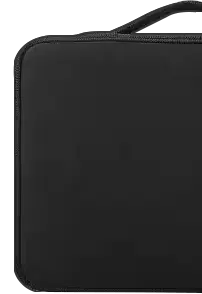What is a BGA?
BGA (Ball Grid Array) is a type of surface-mount packaging for integrated circuits that replaces traditional pins with a grid of solder balls on the underside of the chip. This design allows for high-density interconnects, improved electrical performance, and efficient heat dissipation. BGA packages are widely used for mounting complex components like CPUs, GPUs, memory chips, and FPGAs onto printed circuit boards in laptops, smartphones, networking equipment, and embedded systems.
What are the different types of BGA packages and their applications?
There are several variations of BGA packages designed for specific applications:
- Plastic BGA (PBGA) is common in consumer electronics due to its affordability.
- Ceramic BGA (CBGA) offers better thermal conductivity for high-temperature environments.
- Tape BGA (TBGA) supports flexible interconnects.
- Fine-Pitch BGA (FBGA) provides high I/O density for compact devices like smartphones.
- Flip-Chip BGA (FCBGA) enhances performance by eliminating wire bonds.
- Package-on-Package (PoP) stacks memory and logic vertically to save PCB space.
These types enable scalable designs in performance-driven and space-constrained systems.
How does BGA compare to PGA and QFP, and can BGAs be replaced like socketed PGAs?
BGA packages offer several advantages over PGA (Pin Grid Array) and QFP (Quad Flat Package). BGAs have shorter interconnect paths, resulting in better electrical performance, lower inductance, and improved thermal management. While PGAs use socketed pins, and QFPs have gull-wing leads, BGAs use solder balls that require reflow soldering for permanent attachment. Unlike PGAs, BGAs are not socket-replaceable; they must be desoldered and reworked with specialized tools, making them less flexible but more reliable.
How does BGA design improve signal integrity, and what is the role of the substrate?
Signal integrity in BGA packages is enhanced by the short, consistent paths between the die and the PCB, minimizing electrical noise, capacitance, and inductance. The substrate, typically made of organic laminate or ceramic, acts as an interface that routes signals from the silicon die to the solder balls. It also supports heat dissipation and mechanical alignment. This design ensures high-speed performance and reliable signal transmission, making BGAs ideal for modern digital and RF applications.
What components make up a BGA package?
A typical BGA package consists of a silicon die, a substrate (often organic, ceramic, or tape-based), solder balls, and an encapsulant. The substrate routes electrical signals between the die and the solder balls. The solder balls serve as interconnection points to the PCB. The encapsulant protects the internal components.
How is a BGA assembly soldered to a PCB?
BGA components are soldered to PCBs using reflow soldering. First, solder paste is applied to the corresponding pads on the PCB. The BGA is then placed on the board, aligning the solder balls with the pads. The assembly is passed through a reflow oven, where the solder balls melt and form solid electrical and mechanical connections.
How does thermal dissipation work in BGA chips?
BGA packages offer excellent thermal dissipation due to their solder ball design, which provides multiple thermal pathways from the die to the PCB. The even distribution of these balls allows heat to be spread and conducted efficiently through the board and any attached heatsinks. In advanced packages like CBGA, ceramic materials further aid in heat transfer.
What inspection techniques are used for BGA solder joints?
Because BGA solder joints are hidden beneath the package, inspection requires non-visual methods like X-ray imaging. X-ray inspection allows manufacturers to check for defects such as voids, cold joints, bridging, and misalignment. Advanced automated X-ray inspection (AXI) systems provide detailed imaging of each solder ball, ensuring assembly quality.
What is reballing in BGA processing?
Reballing is the process of replacing the solder balls on a BGA package. It is performed during rework or refurbishment when solder joints become defective or need modification. The process involves removing old solder balls, cleaning the package, applying flux, and aligning new solder balls with a stencil. The package is then heated to reattach the balls.
What materials are solder balls made of?
BGA solder balls are commonly made of tin-lead (Sn-Pb) or lead-free alloys like SAC (Sn-Ag-Cu). The choice depends on application, temperature requirements, and compliance with environmental regulations such as RoHS. Lead-free solder balls are increasingly used in consumer electronics due to their eco-friendly profile.
What is the pitch in BGA packaging?
Pitch in BGA packaging refers to the center-to-center distance between adjacent solder balls. It determines the package's interconnect density. Standard pitches range from 0.8 mm to 1.27 mm, while fine-pitch BGAs can go down to 0.3 mm. Smaller pitches support higher pin counts in compact devices but require advanced PCB fabrication and assembly techniques.
What are common applications of BGA technology?
BGA technology is widely used in high-performance applications such as microprocessors, GPUs, FPGAs, memory modules, network processors, and wireless communication chips. It's prevalent in consumer electronics, telecommunications, automotive systems, industrial equipment, and medical devices. BGAs are favored for their high I/O capabilities, reliable connections, and superior thermal and electrical performance, making them ideal for complex and space-constrained electronic designs.
What is pad cratering in BGA PCBs?
Pad cratering is a failure mode that occurs in PCBs under mechanical or thermal stress, causing fractures between the copper pad and the PCB resin. This is a concern in BGA assemblies, especially during rework or drop testing. It weakens the solder joint and can lead to intermittent connections or complete failure. Preventing pad cratering involves using compliant PCB materials, optimized reflow profiles, and controlled handling procedures.
How is PCB layout designed for BGA components?
Designing a PCB for BGA components requires careful consideration of pad sizes, escape routing, placement, and layer stack-up. Techniques such as via-in-pad, microvias, and dog-bone fan-out are used to route traces from inner solder balls. Controlled impedance routing and thermal reliefs are also factored in.
What are dog-bone fan-out and via-in-pad techniques in BGA layout?
Dog-bone fan-out and via-in-pad are PCB design techniques used to route signals from the densely packed solder balls of BGA components. Dog-bone fan-out creates a short trace (the "dog bone") from the pad to a via outside the BGA area. Via-in-pad involves placing the via directly under the solder pad to save space. These techniques are essential for high-density designs, especially with fine-pitch BGAs, and improve signal routing while maintaining board reliability.
What design considerations are important for thermal management in BGA PCBs?
Effective thermal management in BGA PCB design involves using thermal vias, ground planes, and heatsinks. Thermal vias are placed under or near the BGA to conduct heat away from the chip to internal or bottom layers of the PCB. Copper planes help spread and dissipate heat, while heatsinks or heat spreaders attached to the PCB or component improve cooling efficiency. Proper thermal design prevents overheating, extends component life, and ensures stable performance in demanding applications.
How does underfill enhance BGA reliability in electronics?
Underfill is an epoxy-based material applied between a BGA package and the PCB to improve mechanical and thermal reliability. It fills the gap beneath the chip, surrounding the solder balls and distributing stress evenly across them. This helps protect solder joints from cracking due to thermal expansion, vibration, or mechanical shock. Underfill is especially crucial in applications like automotive or aerospace electronics, where devices face frequent temperature fluctuations and physical stress.













